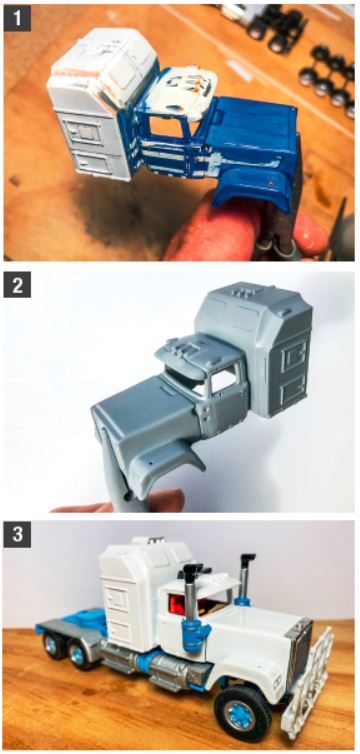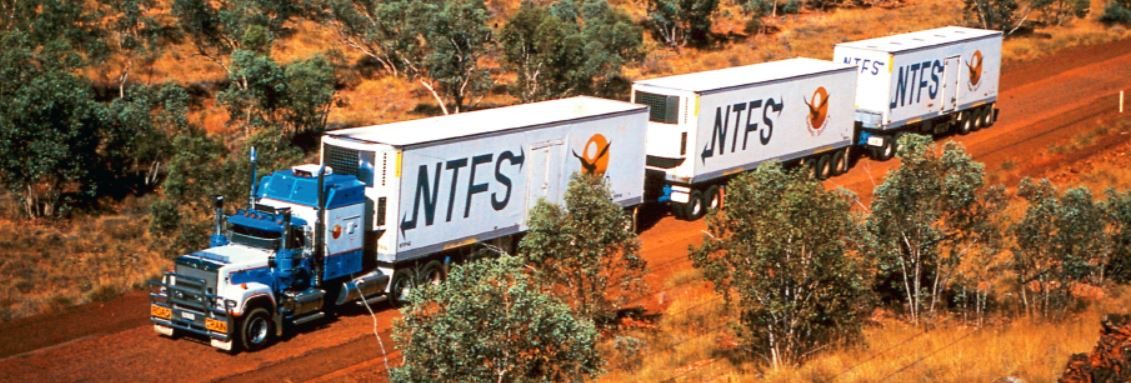MODEL TRUCKING ON A BUDGET
 My passion for trucks and everything to do with the trucking industry goes back beyond my memory. My mother tells me that even at two or three years of age, all I wanted to do was sit behind the steering wheel of the D-series Fords parked at my dad‘s service workshop. At nine, I started a paper round that paid $3 a week. With this fortune, I began to surround myself with Australian Truckin‘ Life and American Overdrive magazines, as well as maintaining a continual lay-by arrangement with Mr Brokenshire, the owner of the local toy store, which sold the latest Matchbox Super Kings and ERTL diecast model trucks.
My passion for trucks and everything to do with the trucking industry goes back beyond my memory. My mother tells me that even at two or three years of age, all I wanted to do was sit behind the steering wheel of the D-series Fords parked at my dad‘s service workshop. At nine, I started a paper round that paid $3 a week. With this fortune, I began to surround myself with Australian Truckin‘ Life and American Overdrive magazines, as well as maintaining a continual lay-by arrangement with Mr Brokenshire, the owner of the local toy store, which sold the latest Matchbox Super Kings and ERTL diecast model trucks.
“Blue Thunder” photos:
1) The heavily expanded and modified sleeper cab, as fitted to the real ‘Blue Thunder‘. 2) A solid coat of primer to seal all the surfaces in readiness for the topcoat. 3) 1:50th scale ‘Blue Thunder‘ now just awaiting its striping, signage and finishing touches
During these early years of fascination with model trucks, well before I was introduced to the larger plastic kitset trucks, I already had the desire to build my own fleet of model trucks that reflected my likes as well as represented the style of trucks and trailers I saw on New Zealand roads. Armed with plasticine, cardboard, sellotape and wire twisty ties, I built my dream fleet; ‘BTL‘ (Bulk Transit Ltd) in 1:64th and 1:50th scale.
These early attempts at scratch-building with household materials taught me skills I still use today with all manner of modeltruck building, regardless of scale.
So, this month, we will break away from the Mercedes-Benz project for just a moment so that I can answer those who have been asking me for advice on an easier, more cost-effective way to start model-truck building.
Being mostly aimed at the toy market means the likes of Matchbox and ERTL diecasts are readily available. However, your local second-hand store is also a great resource, and even ask family and friends if they have any used models they would be willing to part with. Also, worth noting here is that some of the modern plastic toys are well-proportioned and detailed. I recently purchased a couple of 4-Series Scanias from the Warehouse for under $10 that will make great donor models for a typical New Zealand 9-axle unit.
To demonstrate a little of what is possible, here are a few photos of a current project now in the final stages of assembly. It is based on the NTFS (Northern Territory Freight Service) Mack Superliner from Highway Replicas. The model, as it arrived, was representative of a simple company-owned unit, the trouble is when it comes to NTFS history, for me, there is one Superliner that stands out above all others. It was the V8 known as ‘Blue Thunder‘, which was owned and operated through Australia‘s red centre by expat-Kiwi Neville Dobbs. Looking at these photos, you will see that to replicate Dobbsy‘s ‘Blue Thunder‘ from the standard model, I have added an air tank, toolbox, and full alloy guards over the rear wheels. I‘ve also modified the size and structure of the sleeper cab and air intakes as well as lifting the front end of the rig to match the original.

Photos above:
1) The air tank having its chassis mounting straps fitted. 2) Toolbox and air tank installed into position, ready for a coat of NTFS blue. 3) The painted chassis, wheels fitted and nearing completion.
A scratch-built bull bar was also added, as welll as other finer details. But when working at this scale, sometimes less is more – you truly do not need to add screeds of detail, it is more about correct proportions.
The simplicity of working in this scale also reduces construction time; you will be pleasantly surprised how quickly you can complete one of these projects and enjoy the rewards.
Next month, I will take you through a basic build to help demonstrate this and, fingers-crossed, inspire a few of you who have been watching from the sidelines to pick up the glue container and some plastic and have a go.

In pursuit of ‘Blue Thunder‘ – 1/50th scale. This is the real machine in her heyday. Photo Credit: Truckin‘ Life magazine.





